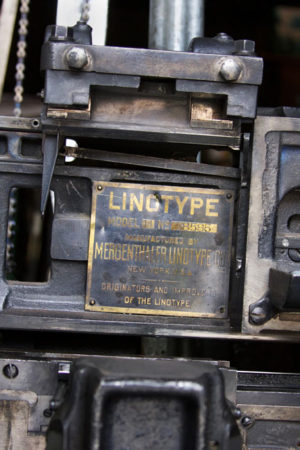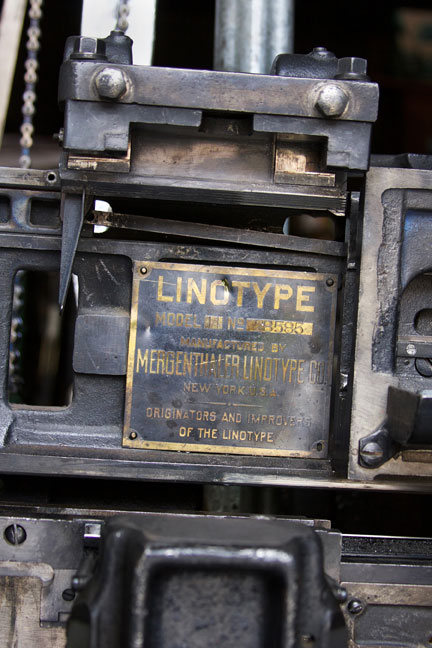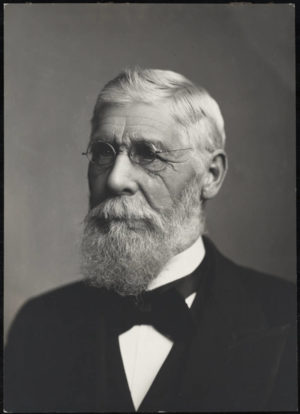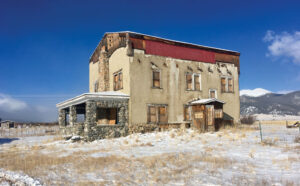By Virginia Simmons
In Colorado’s younger days, publishing a newspaper often simply involved hauling a printing press, a case of lead type, and some newsprint in a wagon across the prairie to a new town or mining camp, printing the current local news, and selling it to any eager soul who could read and had a few coins or some gold dust to spare, until the one-man publisher-editor, reporter-circulation manager, ad salesman-town promoter moved his enterprise to another dot on the horizon.
In the northern San Luis Valley, one man, Dean Coombs still prints his Saguache Crescent on a linotype, although compromises now by having a reporter. This vintage press, which was founded in 1879, has been in the Coombs family for three generations, and still abides by the dictum that it will print no bad news.

Today, due to the bedlam wrought by technology, modern taste, and social media, some local newspapers are clinging to the lifeline of paid public notices until it, too, snaps but some of us still want to see the banner of their own local rag at the top of page one. Often, though, those banners are the old ones used by unimaginative entrepreneurs who leaned toward such a place name followed by a familiar title like Herald, Journal, Times, Chronicle, News or Post. Some on the other hand, with a nod to the principal local activity of the locale dared something like Miner, Range, Mountaineer, or Mail.
Other more creative souls spawned some clever titles. One of the most memorable of these was the Creede Candle, which started as a humdrum chronicle but quickly thought better of the choice. The Candle was published and edited by Cy Warman in the Mineral County silver mining town, reflecting (pardon the pun) its underground and above-ground activities and business life from 1892 until 1930.
From time to time also contributing his verse to the newspaper, Warman had formerly earned his living working for the Denver & Rio Grande Railroad on the rails and selling his poems and a railroad journal called The Frog at stands in railroad depots. Two of Warman’s well-known lines from the first issue of Creede’s newspaper were “It’s day all day in the day-time/And there is no night in Creede.”
Far from the Valley, in New York, Warman lyrics would soon earn him greater popularity with his lyrics for the tune “Sweet Marie.” “Every daisy in the dell/Knows my secret, knows it well/And yet I dare not tell, sweet Marie.” Another verse, later published in Warman’s book, is “Will the Lights be White?” “Oft, when I feel my engine swerve,/As o’er strange rails we fare,/I strain me eye around the curve/For what awaits us there.”
Several of Colorado’s imaginative publishers enjoyed using puns when they named their newspapers. In the San Luis Valley at one time there were a Center Post at Center and Villa Grove had a Headlight, as did Como in South Park. Elsewhere around the state were the Marble Column, Kit Carson Scout, White Pine’s Pine Cone, Pueblo’s Anvil, Glenwood Springs’ Avalanche in it Daily, and, still publishing, The Steamboat Pilot and the Fairplay Flume. Colorado had no corner on witty punsters. Virginia City, Nevada, had a newspaper called the Daily Trespass. And who has not heard of Tombstone, Arizona’s Tombstone?
Political persuasions also governed many publications. A famous press in southern Colorado was Ouray’s The Solid Muldoon (There was also a Solid Muldoon published in Durango), taking its name from a famous hoax of the time, but this was no joke. Its publisher, David Day, sprinkled many pages with sarcastic opinions that spared no business or political target with whom he disagreed, accumulating literally dozen of lawsuits in the process.
[InContentAdTwo]
Many towns and cities had two newspapers, with each press catering to its own partisan subscribers and advertisers, just as print media and broadcasters do now. Fortunately, some have discovered that the way to survive today is by attempting to report news as evenhandedly as possible, and fill up many of the other pages with the ever-popular local sports.
At age 91, Virginia Simmons is still in love with Colorado’s history.




Nice and interesting article. I would like to add that Tombstone Arizona had not only the Tombstone but the Tombstone Epitaph as well (which is still printed today).